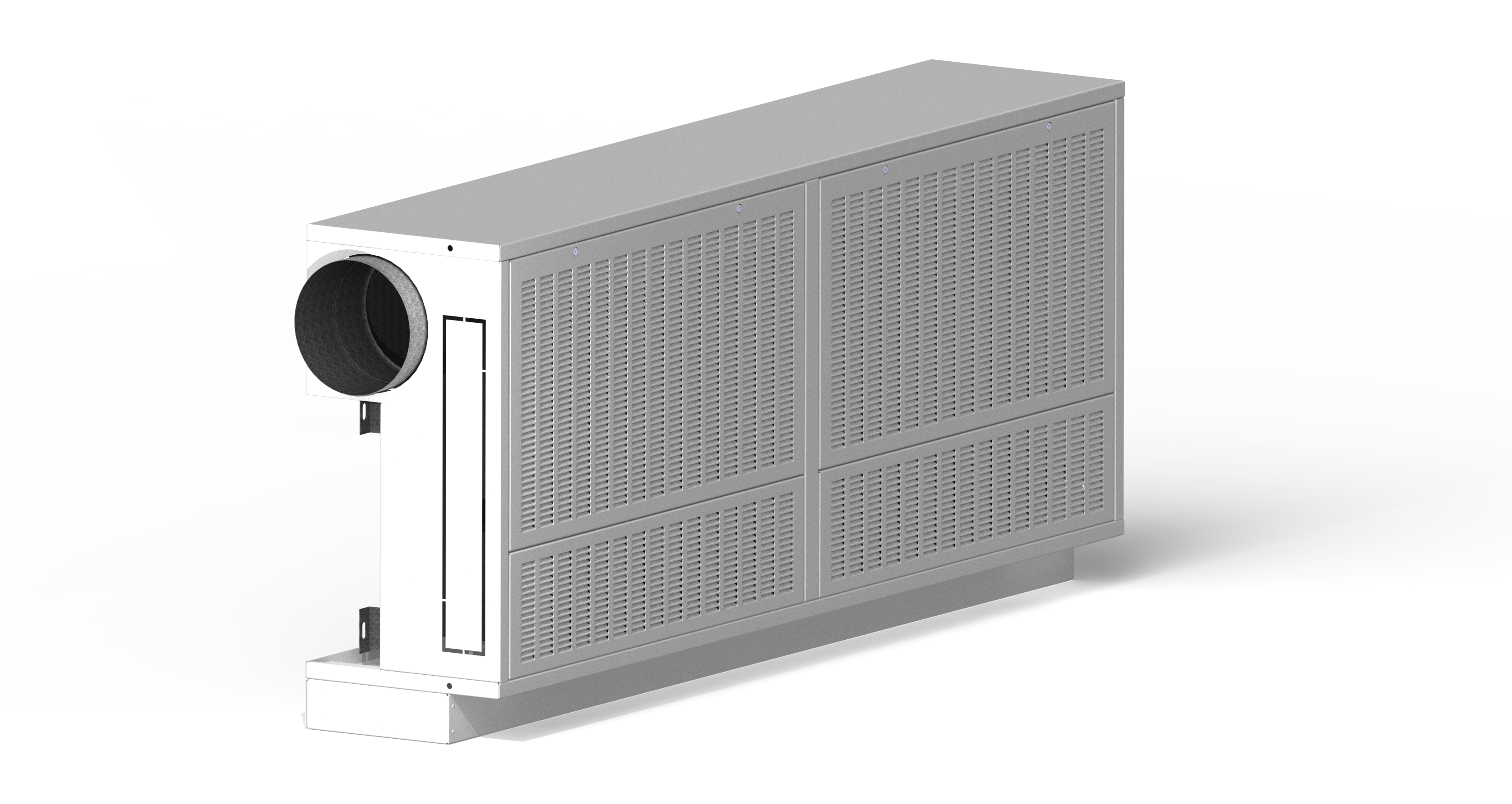
Energy Efficient
Lower Utility Bills
LEED – possible areas for recognizing points in your design
- Energy and Atmosphere: QLCI is an energy-efficient device embedded in Energy Efficient System
- Enhanced Indoor Air Quality Strategies: The improved IAQ delivered through displacement induction ventilation helps capture points
- Acoustics: With no moving mechanical parts, the QLCI helps attain points for quiet acoustics.
ASHRAE 90.1
- National and local energy codes are ever-evolving and placing more stringent requirements for higher operating efficiencies. ASHRAE 90.1 outlines the energy standard for most commercial building types and local codes should be reviewed carefully. The integration of DOAS-QLCI and chilled beam into designs can help Engineers deliver proven efficiencies for the Owners.
- Here’s an example of a design using DOAS-QLCI versus the 90.1 Benchmark

ASHRAE 62.1
- Increased awareness of IAQ is prevalent with how it directly affects the presence of airborne contaminants. ASHRAE 62.1 outlines the industry standards for ventilation and acceptable indoor air quality. The combination of a DOAS-based air handler providing the known, quantifiable amount of outside air together with QLCI and chilled beams can help ensure spaces are receiving the prescribed amount of OA for healthy environments.
- Refer to the most current version of ASHRAE 62.1, specifically the “Procedures Section” for applying ventilation practices specific to Displacement Induction Ventilation
- Additionally, Appendix C is useful to show the proper testing procedure, followed by Purdue University to validate QLCI ventilation effectiveness, Ez.
EPA Comments
From the EPA’s website: “Heating, Ventilation and Air-Conditioning Systems, Part of Indoor Air Quality Design Tools for Schools”
The EPA comments on the suggestions for “Types of Air Distribution” as shown below:
Types of Air Distribution
Nearly all schools currently use the mixed-airflow method for the distribution and dilution of the air within the occupied space. Designers should investigate a method called vertical displacement ventilation or thermal displacement ventilation. This approach successfully uses natural convection forces to reduce fan energy and carefully lift air contaminants up and away from the breathing zone.
Electrification
- An ever-increasing trend in HVAC mechanical designs is the national and local presence of decarbonization or electrification into component selection. By selecting an appropriately designed DOAS unit together with a geothermal or electric-based hydronic cooling and heating plant, the designers can check the electrification box for their needs. The QLCI and chilled beam as the terminal device is a perfect complement to this system design.
Net Zero NYC School
- NYC PS 62 – Katherine Grim for Leadership and Sustainability was the first Net Zero building for NYC Public Schools
- This design utilized the QLCI displacement induction units in classroom spaces.
- Excerpts from published articles:
- From “Architecturalrecord.com”
“For indoor climate control, the team opted for a dedicated outdoor air system with energy recovery and demand control ventilation. In the classrooms, perimeter displacement induction units supply conditioned air at a low velocity, which makes the devices both efficient and quiet”
From “ashraeny.org”
“Indoor Air Quality Enhanced Ventilation – 30% more OA than ASHRAE 62.1 provided to space. MERV 13 filtration on all systems, CO2/particulate sensors in all rooms to control OA volume delivered. All outside air is pre-treated by energy recovery ventilators; demand control ventilation and displacement induction units delivering the air to all classrooms further reduce energy use.” “As school buildings in New York City represent one of the largest contributors to greenhouse emissions for municipally owned buildings, the reduction in energy use represented by P.S. 62R sets a standard for the potential of the City’s schools to influence positively the municipal carbon footprint. As a case in point, the primary HVAC design component, displacement induction units in the classrooms,…”

Contact Carson Solutions
Reach out to a rep or contact us for more information on our products.